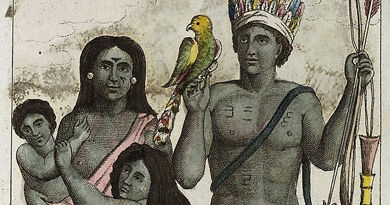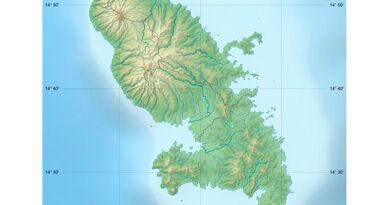Use of Cassava flour
It is a pancake obtained after cooking the cassava flour. It was the basis of the Caribbean diet, which certainly transmitted to the first Europeans arrived in our islands the secret of its preparation. “The Caribbean,” said Father Labat, “made large cassaves 2 to 3 inches * thick, which they took with them on their expeditions.” For a long time, the colonists had no other bread, their cassaves were only about 3 cm thick, like those made today. Here is the opinion of R.P. Du Tertre: “I am,” he says, “so well accustomed to good cassava, that I have always preferred it to the bread that is brought to us from Europe.” Several are of my feeling on this point, provided that it is fresh, made of good Cassava, and whose flour has been passed through a very fine hebechet ”.
The preparation of the Cassave in the 17th century
1) Grate the Cassava. Once peeled and washed, the tubers were grated. The grater, also called wire mesh, as described by R.P. Du Tertre, was a foot and a half high (about 50 cm), eight or ten inches wide (around 30 cm). It was tied on a board which was put down in a container. We pressed the top against the stomach, then we rubbed the root with both hands and all the marc fell into the container. Things did not stop there. The way of grating or “grilling” evolved. Large wheels were invented entirely covered with graters, so that, according to what the same author wrote: “… three negroes in one hour make more flour than ten others, there are two which turn, and one which provides the roots … “.
2) Squeeze the pulp. The purpose of this second operation was essentially to rid the collected pulp of any liquid. There were three ways to do this. The first was to place the flour wrapped in a reed mat, in a wooden trough pierced with holes. We then covered the container with a board, and thanks to a lever system, we made a press weighing on the lid and allowing the juice to flow.
The second way was as follows: the grated cassava was distributed in several stacked canvas bags, between which wooden boards were inserted. The press was the same, but this process was used less than the first, because the bags were too expensive. These two ways of expressing Cassava juice were used by the colonists. The third was that of the Caribbean: they put the flour in a “snake”, a sort of very elongated reed or Latanier bag. They hung it on a branch or on the roof of their carbet, then tied a large stone at the bottom of the “snake” which thus elongated, and narrowed, pressing the Cassava whose juice flowed little by little.
3) Sift the flour. This operation consisted in passing the grated cassava, pressed and dried in a sort of sieve with small square holes made of cut reeds or braided Latanier leaves. Thus, the lumps which had formed during pressing were broken, all the excessively large and badly grated pieces were eliminated, as were the bits of knots and bark.
4) Cook the Cassava. Cooking was generally done, among the colonists, on a round plate of molten iron, about a cm thick, about sixty cm wide. The Caribbean used large flat and thin stones, specially prepared for this purpose, or terracotta plates.
Here are all the details on the cooking of Cassava, given by Father Labat “… So we put this flour about the thickness of three fingers on the whole plate; it lowers or collapses as it cooks, all the parts are caught, joined, incorporated and bound together. Whoever works it helps to provide this connection and compression, by passing over it and lightly pressing a wooden spatula which he holds in his right hand. When he judges that the side that touches. the plate is cooked, which one recognizes that it is no longer adherent to it, and that the color which was at the beginning very white, becomes red, it turns it on the other side, which it does by passing the whole spatula between the plate and the cassave which he raises enough to be able to pass the left hand there, and thus raising the whole cassave, he makes it fall on the plate, on the side which has not yet felt the heat. It is in this situation that the cassava finishes cooking; when it is pulled from above the stage, it is exposed to the sun for two or three hours in order to complete drying out the humidity which could have remained there … ”.
How do you prepare Cassave these days? The various operations remain the same grating, pressing, sieving and cooking; equipment from the oldest rural tradition remains widely used. Moreover, the Indians of Guyana still make the Cassave called “Couac” today, as the Caribbean of the Antilles did at the beginning of colonization.
The Ouïcou It was the favorite drink of the Caribbean. For a long time, they alone had the secret of its preparation. Then, little by little, the Europeans learned to do it in their turn. The Caribbean used a canary, a terracotta container, which they filled with water, to which they added two to five Cassaves, five or six cut sweet potatoes. Then they covered the canary. Overnight, the mixture fermented. They got, it seems, a drink as good as the best beer. The Indians of Guyana still consume it today. Little by little, the Europeans who arrived on our islands changed the recipe. To the Cassaves and Sweet Potatoes, they added large cane syrup (molasses). When they ran out, they replaced it with a dozen sugar canes and the same number of ripe Bananas, cut into pieces and crushed. Fermentation was done for two or three days. The drink obtained was reddish, refreshing and nourishing, it seems, but also very intoxicating.
Mustache The peeled and grated tubers form, as we have already said, a dough which is put in bags, then pressed. The juice flowing from it gives, by decantation, “Moussache”, local name of Starch. The Moussache, to which Cassava flour has been added, is mainly used for making Cassave. It is also used as a job; they are also made into cakes, known as “Moussache sweets”. It can be transformed into tapioca, but this industry does not exist on our islands. Moussache was made and used in the 17th century, as evidenced by the writings of the first chroniclers: “We use this juice to make starch by drying it in the sun where it becomes white like snow, so we calls him Mouchache, as he would say a child of Cassava, because the word Mouchache, which is Spanish, means a child. The juice has a little sour taste which is lost as it ages. We use the Mouchache to make cakes that are as delicate as if they were made from the finest flour of wheat flour … ”(Père La bat). If, in certain regions of our islands, Cassava is still cultivated to make flour, Moussache and Cassaves, this culture nevertheless tends to disappear. The planted areas are very small and small family businesses close their doors.




